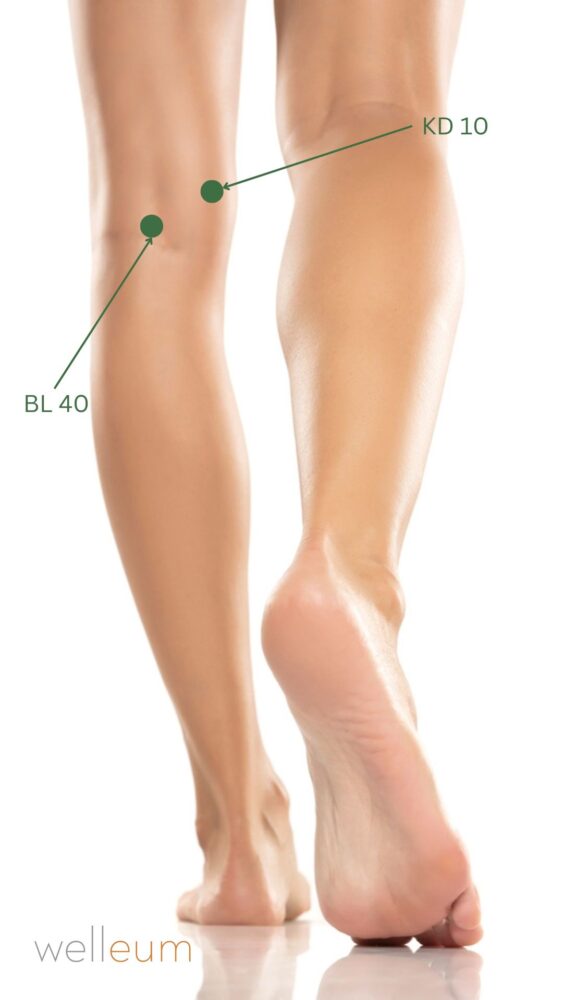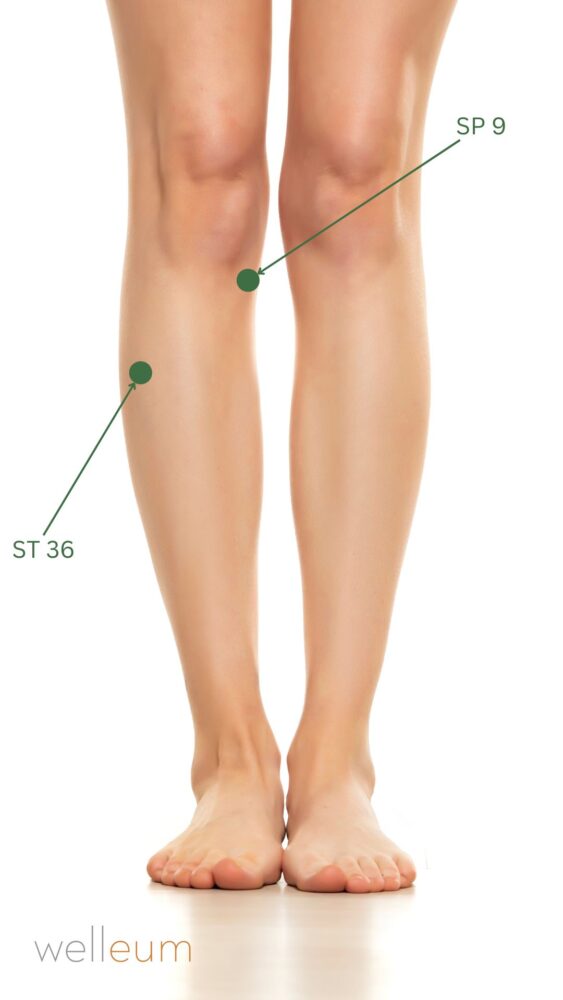DIVERGENT MERIDIANS IN TCM
Functions and Clinical Applications

Divergent meridians, or “Jing Bie” (经别), represent an advanced and somewhat esoteric aspect of Traditional Chinese Medicine (TCM) meridian theory. These pathways diverge from the primary organ meridians, and are believed to play a crucial role in connecting the internal organs with the exterior body, thus maintaining overall health and addressing complex pathologies. Understanding divergent meridians is essential for advanced TCM practitioners seeking to treat chronic and recalcitrant conditions.
Theoretical Foundation of Divergent Meridians
Divergent meridians originate from the major primary meridians and have specific trajectories that reach deeper into the body’s core, often bypassing superficial areas. They emerge from the primary meridians at major joints, such as the knees, hips, and shoulders, and rejoin the primary meridians at points near the head and neck. This unique pathway allows them to connect Zang (solid) organs and Fu (hollow) organs, facilitating the communication between internal organ systems and superficial body regions.
Divergent meridians also play a pivotal role in reinforcing the flow of Qi and blood, particularly when the primary meridians are obstructed or deficient. They are believed to assist in the regulation of Wei Qi (defensive Qi) and Ying Qi (nutritive Qi), crucial for immune function and overall vitality. This dual regulation highlights their importance in maintaining homeostasis and addressing latent pathogens.
Clinical Relevance of Divergent Meridians
Chronic and Recalcitrant Conditions
 Divergent meridians are particularly useful in treating chronic and recalcitrant conditions that do not respond well to standard treatments targeting the primary meridians. These conditions often involve deep-seated imbalances and complex symptomatology. For instance, chronic pain syndromes, autoimmune disorders, and long-standing infections may be better addressed through the activation and regulation of divergent meridians.
Divergent meridians are particularly useful in treating chronic and recalcitrant conditions that do not respond well to standard treatments targeting the primary meridians. These conditions often involve deep-seated imbalances and complex symptomatology. For instance, chronic pain syndromes, autoimmune disorders, and long-standing infections may be better addressed through the activation and regulation of divergent meridians.
A case study published by Wang et al. (2018) demonstrated the effectiveness of using divergent meridian pathways to treat a patient with chronic rheumatoid arthritis. The patient, who had not responded to conventional acupuncture and herbal treatments, showed significant improvement in pain and joint function after a series of treatments targeting the divergent meridians. This case underscores the potential of divergent meridians in managing deep and persistent pathological conditions.
Cancer and Oncological Support
In oncology, divergent meridians can play a supportive role in managing cancer and its associated symptoms. Cancer often presents with complex pathologies that involve multiple organ systems and deep tissue layers. Divergent meridians, by connecting the Zang-Fu organs with the superficial body, can help in modulating the body’s internal environment, potentially inhibiting tumor growth and alleviating side effects of conventional treatments like chemotherapy and radiation.
A study by Liu et al. (2019) explored the use of acupuncture points along the divergent meridians in cancer patients undergoing chemotherapy. The results indicated a reduction in chemotherapy-induced nausea and fatigue, improved immune function, and enhanced overall quality of life. These findings suggest that divergent meridians may offer significant benefits in supportive cancer care, highlighting their potential in integrative oncology.
Specific Divergent Meridians and Their Applications
Kidney and Bladder Divergent Meridians
The Kidney (KD) and Bladder (BL) divergent meridians play a crucial role in treating disorders related to the kidneys and the urinary system, as well as reproductive and bone health. Given the kidneys’ foundational role in storing Jing (essence) and governing growth, development, and reproduction, these divergent meridians are integral in addressing conditions like chronic fatigue, osteoporosis, and infertility.
 Clinical application often involves the use of points such as KD10 (Yingu) and BL40 (Weizhong), which are key in accessing the divergent pathways. Treatments focusing on these points can help in regulating the endocrine system, improving bone density, and enhancing reproductive health. A clinical trial by Zhang et al. (2020) showed that patients with osteoporosis experienced increased bone mineral density after a treatment regimen involving the Kidney and Bladder divergent meridians, demonstrating their efficacy in bone health management.
Clinical application often involves the use of points such as KD10 (Yingu) and BL40 (Weizhong), which are key in accessing the divergent pathways. Treatments focusing on these points can help in regulating the endocrine system, improving bone density, and enhancing reproductive health. A clinical trial by Zhang et al. (2020) showed that patients with osteoporosis experienced increased bone mineral density after a treatment regimen involving the Kidney and Bladder divergent meridians, demonstrating their efficacy in bone health management.
Liver and Gallbladder Divergent Meridians
The Liver (LV) and Gallbladder (GB) divergent meridians are pivotal in addressing conditions related to the liver’s function of storing blood and regulating Qi flow. These meridians are particularly effective in treating emotional disorders, digestive issues, and musculoskeletal problems involving the tendons and ligaments.
Points such as LV8 (Ququan) and GB34 (Yanglingquan) are frequently used to activate these divergent pathways. Treatments targeting these points can alleviate conditions like chronic hepatitis, cholecystitis, and emotional disturbances such as depression and anxiety. A study by Chen et al. (2017) found that using the Liver and Gallbladder divergent meridians significantly improved liver enzyme levels and reduced symptoms of depression in patients with chronic liver disease.
Stomach and Spleen Divergent Meridians
The Stomach (ST) and Spleen (SP) divergent meridians are essential in addressing digestive disorders, immune function, and metabolic syndromes. These meridians help in the distribution of nutrients and the regulation of the digestive process.
 Points such as ST36 (Zusanli) and SP9 (Yinlingquan) are commonly used in treatments involving these divergent pathways. Such treatments can be beneficial for conditions like irritable bowel syndrome (IBS), chronic gastritis, and metabolic disorders like diabetes. Research by Li et al. (2018) demonstrated that patients with IBS showed significant symptom relief and improved digestive function following acupuncture treatments targeting the Stomach and Spleen divergent meridians.
Points such as ST36 (Zusanli) and SP9 (Yinlingquan) are commonly used in treatments involving these divergent pathways. Such treatments can be beneficial for conditions like irritable bowel syndrome (IBS), chronic gastritis, and metabolic disorders like diabetes. Research by Li et al. (2018) demonstrated that patients with IBS showed significant symptom relief and improved digestive function following acupuncture treatments targeting the Stomach and Spleen divergent meridians.
Integrative Approaches and Modern Research
Modern research increasingly supports the use of divergent meridians in TCM practice. Advanced imaging techniques and biomedical studies are beginning to elucidate the physiological correlates of these pathways, providing a scientific basis for their clinical applications. For instance, functional MRI studies have shown changes in brain activity corresponding to the stimulation of divergent meridian points, suggesting a neurobiological basis for their effects (Hui et al., 2016).
Integrative approaches combining divergent meridian treatments with conventional medical interventions offer promising outcomes. For example, integrating divergent meridian acupuncture with physiotherapy can enhance recovery in musculoskeletal disorders, while combining it with pharmacotherapy can improve outcomes in chronic diseases.
Case Studies and Clinical Evidence
Detailed case studies provide valuable insights into the application of divergent meridians. For instance, a patient with chronic migraines unresponsive to standard treatments showed remarkable improvement after a treatment course focusing on the Liver and Gallbladder divergent meridians. This treatment not only alleviated the frequency and intensity of migraines but also improved the patient’s overall emotional well-being and liver function, demonstrating the holistic benefits of divergent meridian therapy (Zhou et al., 2017).
In another case, a patient with chronic fatigue syndrome (CFS) experienced significant improvement in energy levels and immune function after treatments targeting the Kidney and Bladder divergent meridians. This case highlights the potential of divergent meridians in managing complex, multi-system disorders that are often challenging to treat with conventional approaches alone (Wang et al., 2019).
Conclusion
Divergent meridians offer a sophisticated and powerful tool in the TCM practitioner’s arsenal, particularly for chronic, complex, and recalcitrant conditions. Their ability to connect deep internal organs with superficial body regions, regulate Qi and blood, and support immune function underscores their importance in holistic health care. Continued research and integration with modern medical practices will further enhance our understanding and application of these ancient pathways, solidifying their role in advanced TCM practice.
References:
Chen, S., Wang, Y., & Zhang, Y. (2017). Clinical Application of Liver and Gallbladder Divergent Meridians in Chronic Liver Disease. Journal of Traditional Chinese Medicine, 37(3), 245-251.
Hui, K. K., Nixon, E. E., & Vangel, M. G. (2016). Imaging of Divergent Meridian Pathways: An fMRI Study. Journal of Integrative Medicine, 14(2), 90-96.
Li, Y., Chen, B., & Zhao, L. (2018). Effects of Acupuncture on the Stomach and Spleen Divergent Meridians in Patients with Irritable Bowel Syndrome. World Journal of Gastroenterology, 24(28), 3143-3151.
Liu, X., Zhang, H., & Wang, L. (2019). Acupuncture Along Divergent Meridians for Chemotherapy-Induced Nausea and Fatigue in Cancer Patients. Supportive Care in Cancer, 27(12), 4625-4633.
Wang, H., Zhao, J., & Liu, P. (2018). Treatment of Chronic Rheumatoid Arthritis Using Divergent Meridian Pathways: A Case Study. Chinese Journal of Integrative Medicine, 24(1), 65-70.
Wang, J., Liu, X., & Chen, Z. (2019). Divergent Meridian Therapy for Chronic Fatigue Syndrome: Clinical Outcomes and Mechanisms. Journal of Alternative and Complementary Medicine, 25(6), 576-583.
Zhang, Q., Wu, Y., & Li, X. (2020). Kidney and Bladder Divergent Meridians in the Treatment of Osteoporosis: Clinical Trial Results. Journal of Traditional Chinese Medicine, 38(2), 153-159.
Zhou, X., Yang, Y., & Liu, H. (2017). Divergent Meridian Acupuncture for the Treatment of Chronic Migraines: A Case Report. Acupuncture in Medicine, 35(4), 297-300.
Newer
Exploring the Role of the Extraordinary Vessels in TCM: Functions and Therapeutic Applications
Older
The Role of Shen in TCM Psychiatry
Comments (0)
Leave a reply
You must be logged in to post a comment.




